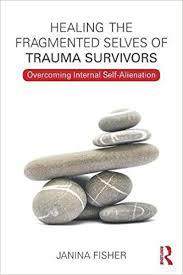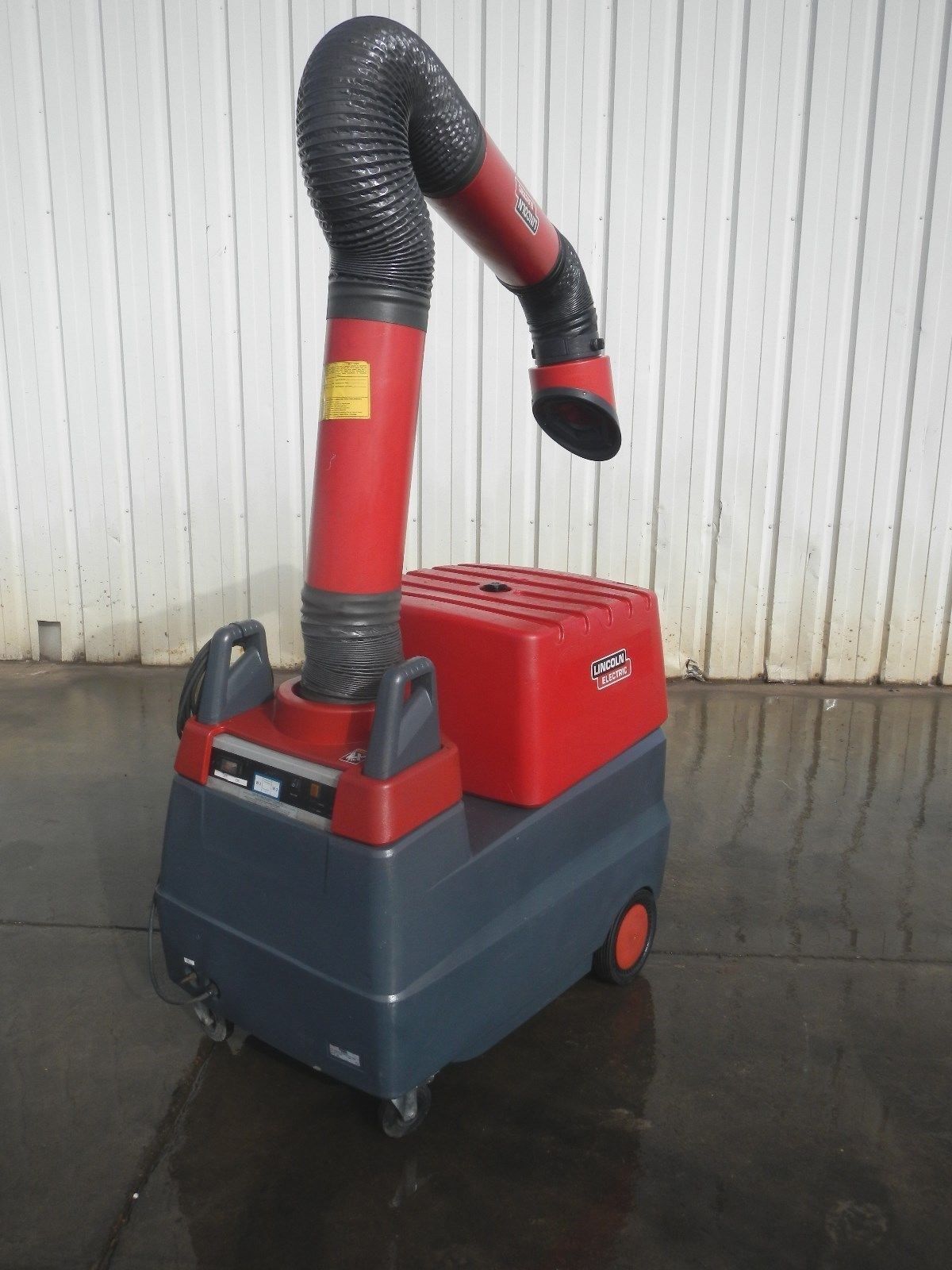For a long time, I have known that I hold trauma in my body. I have known that I experience my world and the people around me somatically. I feel my environment, the buzz or vibe a place might give off, a room or house can make me feel sick or depressed or anxious or subdued or warm and happy and safe and relaxed. Same for people. I attune to people very easily. I get so much information about people, not just from what they say or how they act, but how they look, what they wear, what energy they exude. I suppose it’s a side-effect of hypervigilance.
It is a bombardment of important information, and it happens instantly and it’s something I am so used to that I rarely even notice it’s happening. And of course for most of my life I have been so detached and dissociated that I haven’t been able to feel it happening, and I haven’t been able to interpret when my body is feeling the effects of over-stimulation, until I get to overload and then BOOM! I am overwhelmed and panicked.
This has happened so many times in therapy. I am so busy trying to sift through all the information that is bombarding me about the room- (what’s changed? Why’s that moved? That’s new where did it come from? What’s the smell? Is this room safe? What is Sienna doing? What’s new with her? She’s acting different, what does that mean? Does she have something bad to tell me? What mood is she in…. and on and on it goes)- and also trying to look normal and continuing the conversation flow that I don’t notice that I’ve been triggered or that I am approaching overwhelm.
With all that in mind, I know that without the safety of outside support from Sienna, it is imperative that I do no reach overwhelm in sessions. That I do no leave too dysregulated. And that means starting to slow everything right down so that I can process what’s going on for me each moment of therapy instead of just experiencing it in the background but not fully feeling it until I leave the session and then processing it alone and feeling totally bombarded.
It’s really hard to do. To slow everything down, to be mindful of what my body is feeling. But it is a skill I need to learn if I am to survive therapy.
In December, I came across a YouTube video that set me on the path to find out more about how I could work with my body to release trauma without having to necessarily tell the trauma stories. I think I had also been looking for Somatic experiencing videos at the time, desperate for some sort of “how to” instruction that could light my path to a way of working safely with Sienna.
I had also been looking for Somatic Experiencing practitioners in my area but there are none that I could find.
The video that changed things for me was a training video for Somatic Attachment Therapy by Karen Rachels LMFT. I will include the video for anyone who is interested. It is 37 minutes long though.
Somatic Attachment Therapy Video
In the video a trainee therapist sits in from of Karen Rachels, and they have a mini session. And the purpose of Somatic Attachment Therapy is that the therapist closely tracks what the client is doing non-verbally and brings it to the attention of the client in a gentle attuned way which very much emulates the bonding and attunement a baby should get from its mother.
There’s much more to this than I can explain or remember. But the video impacted me. Because I saw how badly I was missing out on that level of attunement. And okay, the video was a bit stilted and cheesy for me and my British sensibilities, but I can see how in actual therapy sessions it would be so powerful and I was also very moved by both the trainee and therapist interactions. It was beautiful.
And I felt watching it that I was missing that level of attunement from Sienna too. She used to be much better at tracking me. Not to the level of the video because at the end of the day, she isn’t a Somatic Experiencing practitioner. But I could see how lost we’ve been and I was thinking that if I could leave my sessions feeling very emotionally connected to Sienna, then the rest of the week without contact would be a lot more doable.
I have noticed for a long time that the sessions where I have felt emotionally held, psychologically held AND have had physical contact with Sienna, that my week has been more calm and more connected.
I need more of that. If I am to rely on myself in between sessions, I want more physical holding. It grounds me, it reassures me and imbues in me a sense of belonging, a sense of care and love. And I find it easier to hold onto her during the week if there’s been physical holding.
I am not yet at the stage that I can tell her that I need more holding because I feel ashamed of it and also have a sense of not deserving it or fear of her finding me too disgusting but feeling like she has to do it or can’t say no.
The young parts can be reached quickly via physical holding. A lot of our conversations have been around how to access the young parts in sessions. How can they get past the gate-keeper parts and be allowed to come to the room and play?
I’ve found that the only time they come out is during or just after a very dissociative episode or when extremely distressed and obviously I don’t want to have to be distressed or severely dissociated for them to be allowed out.
And the only other exception to this is during the times I am cuddled into Sienna. That’s when they come out and that’s often when they tell Sienna their worries or their memories. Often that’s when the abuse stuff is told too.
I don’t know if Sienna has made that connection yet. I don’t think so.
But in those moments when I feel warm and safe in her arms, the little ones come out. Often, we just talk, like little kids do in quiet moments. Sienna chats with them, she strokes our hair softly or rests her head on top of mine and sometimes we sit like that for a while, in silence. Sometimes the little ones will cry and tell of their memories and ask little kid questions and Sienna will answer them and teach them about things. Sometimes she kisses the top of my head and hugs me tighter.
It’s lovely and healing and bonding. And most importantly I leave my session feeling heard and seen and loved and I can transition more easily back into adult afterwards.
Touch is such a powerful tool. It breaks my heart that so many therapists won’t allow it.
However, that level of holding can be felt without touch too, I think. And the training video by Karen Rachel demonstrated how that can be done.
Her relaxing tone of voice, her interest in the trainee, her soft and interested questioning, her calming and reassuring focus on the therapist felt so warm and supportive.
I could see how sessions like that could help me. If Sienna could track me more, track every single sentence or movement I make and draw my attention to it, it would slow everything down for me and allow me time to process what I am really thinking or feeling in every moment and really tune in to what my body is doing. It would give me space to breathe and to really experience what is going on for me and give those parts a voice.
I felt hopeful watching that video. It really clicked for me that I need more of that. Whether with Sienna or a somatic experiencing therapist (if I can ever find one.)
I realise it’s not fair to ask Sienna to know how to do that since she isn’t trained in S.E. But I think it’s reasonable to ask if we can at least try to be more mindful of slowing everything right down.
Many times Sienna and I have touched on the need to slow things right down for me. We have known this for a long time, that I get overwhelmed with stimuli and I can’t process it in the moment AND act normal, so I dissociate my body feelings and emotions so that I can keep up with the conversation. And it isn’t until after the session, when I’m on my own, that I start feeling things and having reactions to things said in session and of course by then it’s too late to get help for that and that would just trigger me more and more.
But I think this is something we need to really focus in on this year.
Having watched the Somatic Experiencing video, I began really researching body therapies, looking for ideas that I could incorporate in my sessions and it was so illuminating to read and watch video from the likes of Pat Ogden, Bessel Van der Kolk and other trauma therapy veterans.
I knew their way of working was the key to helping me cope with therapy outside of the therapy room.
I bought a book I’ve been wanting for a long time but kept putting off because it was a bit expensive. The book is Healing The Fragmented Selves of Trauma Survivors; Overcoming Internal Self-Alienation. By Janina Fisher.

I am still working my way though this book but it’s truly amazing. If you are a therapist who works with complex trauma clients OR a person with childhood trauma, please, please by this book. It explains so well what happens for both therapist and client when fragmentation, splitting, dissociation happens and how to deal with it.
Some of it I knew on an intellectual level, and some of what’s written I knew on a feelings level but couldn’t articulate. This book has given words to my experience, it has given clear simple explanations for it and most valuably, gives suggestions of how to work with the fragmented parts and alters.
What I have learned so far is that in order to survive childhood trauma, we split. And the parts/alters hold the pain and the memories and the fears so that the child can get on with living and surviving. The alters hold the trauma so that the child can go to school, learn what it needs to grow up and get out. The child essentially cultivates an “apparently normal self” which can fit in with society and make things look and seem normal.
It explains why I could go to school, be intelligent, achieve things, go to work, have friendships and relationships, be a competent adult at times yet inside, or when alone or in times of stress I just fell apart spectacularly. I could never work out why, if I am such a competent adult sometimes, why can’t I be a competent adult ALL the time? It made me feel like my pain and child-likeness was fake, not real, and I was a malingerer who was capable of being a successful adult but was choosing not to be.
In my 20’s, I worked shifts in a care setting. On my days off, I would fall apart. I used those days to let out all that I’d been holding in during my work days. It was a relief to do so but I was a suicidal mess. I would buy a ton of alcohol, drink it , mix pills, cut myself, throw things around the house, sit in the middle of the floor rocking and crying and feeling like I couldn’t survive. And then, when it was time to go back to work, I tidied the house, I cleaned myself up, sobered up, and stuffed it all back in and then went back to work and was this competent, very reliable member of staff. You would never recognise me.
The book talks about learning how to recognise the parts/alters. How to begin understanding each part’s job within the system. It explains how to begin communicating with the parts/alters.
In mindfully scanning the body for feeling states, you can pick up the parts/alters communications. I know this will work for me. By slowing down all the talking in sessions, I will be able to concentrate on what I am feeling and what thoughts are coursing through me and thus identify which parts/alters are present. It will also help Sienna to know who is in the room with her and she can adapt her style of working and her speech to the alter who is presenting.
It’s such complex work!
In the chapters that I have read, there’s a big emphasis on “ Un-blending.” And this is a word I am going to relate back to in 2018.
In working with fragmented parts and alters, it’s really important to learn to gain distance from the alters emotions and reactions.
The alters are the most traumatised, defended parts of me. They are the parts who remember the traumas and who are still holding them, reliving them, and defending me from the traumas and perceived dangers.
But in being blended with them, I don’t realise that it’s the parts influencing how I’m feeling, I think it’s just me, how I am feeling. And I get swept up in trauma responses, body memories, flashbacks, extreme emotions and distress.
In learning to un-blend, I can take a step back from the alters, and realise it’s their stuff, not mine in 2018. Me, the adult, the apparently normal self, I am okay, I am safe, there is no danger in the present. And that gives me enough space to begin to soothe the alters, to reassure them, to stay grounded in the present and eventually the alters settle down, my fight or flight responses settle and the trauma stuff dissipates. (until next time!)
I have been practicing this since December and it really works. Having that space from the alters is allowing me to cultivate this lovely nurturing adult self, an inner voice that is kind and supportive and calm and capable. And un-blending is allowing me to live in the present. It is allowing me to have compassion for the alters who are upset for whatever reason and it allows me to reassure them of what is reality.
It doesn’t and won’t always work. What I’ve realised is that I still don’t always know when I’ve switched into an alter. I don’t always feel that it’s happened. I am getting better at recognising it, there’s some very obvious signs of switching that I can generally catch, like the more extreme ones such as child alters or angry teen alters. But what I am learning is that there’s a lot of very subtle switching of alters, the symptoms of which I never even knew indicated a switch!
In learning about blending and un-blending, I suddenly realise the extent my alters play in my everyday living. I am starting to see just how fragmented I really am. I am starting to get a meta-perspective of the system as a whole and how it is working.
When I think of myself, I see an image of a huge clock. On the front, all you see is a clock face with ticking hands, doing what normal clocks are expected to do.
But behind the scenes, in the back, there’s an elaborate landscape of cogs and bolts and rivets and springs and movement plates, all apparently separate on their own but working together to make the clock face tick.
For me, my alters seem separate. They exist on their own, frozen in time and not aware of the other alters, there is no verbal communication between them. But each alter has a job to do and each alter is intrinsically linked and poised ready to do what’s needed to keep me as a whole, psychologically in- tact. There is an implicit communication between them, they all have a place within me, they support each other automatically without being particularly aware of why they’re doing what they’re doing or being aware of each other’s existence.
I told Sienna the other day, I have felt overwhelmed by the sheer volume of parts that I know of. I told her that I know there’s many more that I don’t know about yet and that I suspect that I have at least one part for every year of life. She nodded in agreeance.
But what this book has done is normalise this splitting. I don’t feel like a freak of nature anymore.
I don’t feel really badly damaged or that I have some extra-ordinary mental illness. It’s complex, yes. It makes me a difficult client to understand or deal with because there’s so many of me. But I am not alone. Splitting and fragmenting is a normal response to extended trauma and most people with complex trauma will be on that spectrum somewhere to a greater or lesser extent.
I am on chapter 6, Complications of Treatment: Traumatic Attachment.
This is the chapter I’ve been waiting to read and most interested in, given my attachment difficulties that have given rise to many ruptures and two terminations from two separate therapists in the past.
I have known for many years that I have traumatic attachment issues. I’ve just never understood fully why they happen or how to stop them.
Despite my excitement to read this chapter, I entered with trepidation, fearful of what I was about to read, fearful that there would be no help for people like me, that I might read that people like me are doomed. Or worse, that the treatment is therapist withdrawal or some other harsh suggestion.
I am only a couple of pages in but one paragraph basically encapsulated in a few sentences what happened to Sienna and I recently. It succinctly explained how my traumatic attachment and needs drove me to do and feel the things I did, and it explained the pull for the therapist to do more and more until they implode.
I cried. Cried for relief that finally there was a way to understand why this rupture had been so spectacularly huge. I cried for me and for Sienna. Sad that it had happened but heartened to hear that it was a very common pitfall that both therapist and client fall into.
There’s a massive chance that if you work with complex trauma clients who have attachment trauma or are a client with those issues, then you ARE going to fall into these common mistakes.
I am going to quote the passage that impacted me so much.
Chapter 6 (page 109 + 110) Awakening the Yearning for Care.
“ Rather than feeling comforted by the therapeutic relationship or by the growing closeness that usually occurs as a natural, healthy outgrowth of psychotherapy, the attach parts can often have the opposite reaction. As they feel “closeness” at long last, it is both a relief and a trigger. Their fears of abandonment and sensitivity to empathic failure typically intensify, often leading to increased demands on the therapist’s time and energy. Concerned by the increasing levels of distress, volume of calls, mounting instability, or accusations of empathic failure, therapists may not realise that their valiant attempts to create safety and attunement in the therapy are instead evoking implicit memories. The feeling memories of painful yearning for someone to care, to comfort, to be close often evoke a hunger for contact that can become obsessive and is often pathologized as psychotic or erotic transference. In addition if therapists are not familiar with the Structural Dissociation model or have been trained to diagnose the symptoms of disorganised attachment as evidence of borderline personality disorder , they can be dysregulated by the shifting states and conflicting presentations of the client.
The going on with normal life self might trust the therapist’s offer of safety, might be willing to work in their therapy with little need for reassurance. The attach parts will trust the therapist immediately and unconditionally but their yearning for closeness will also be triggered by kindness, warmth, care, resulting in an increasing hunger for more and more proximity. Desperate for contact, the attach part often has difficulty leaving the therapist’s office at the end of sessions and or seeks “proximity” between visits- through voicemail, email or text. Because these young parts are highly anxious and alarmed, their messages often appear to be signs of crisis to which therapists feel a responsibility to respond.
Over time, however, the therapist may begin to notice a pattern: the same level of urgency is evoked by both large and small stressors: therapeutic reassurance is less rather than more successful over time; sensitivity to empathic failure becomes heightened; and the number of crisis calls does not diminish over time or may even increase. That is because the job of these parts is to “cry for help” and because their implicit memories of yearning for contact and fear of abandonment are exacerbated, rather than soothed, by proximity to an attachment figure. Without the therapist’s awareness that these parts are just one aspect of an otherwise competent adult or that their distress represents activation of memory, he or she may feel responsible for soothing them.
One way for therapists to recognize when they are being “inducted into the system”(i.e., have taken responsibility for regulating and soothing a part whose job it is to maintain proximity to potential attachment figures) is to look at whether the treatment is successfully stabilising the client and expanding the window of tolerance. When, despite the out-of-session support, the client needs more rather than less contact to remain stable, therapists can be quite certain that they have inadvertently been responding to an attach part whose job it is to elicit care, not an adult client needing some temporary support in resolving a crisis while developing more ego strengths and resources.”
—————————————————————————————————————————————–
What this passage doesn’t address, from what I’ve read, is what if even though the attach parts are increasingly demanding and triggered from the contact, there are other parts who DO get benefit from the out of contact support and that the contact DOES help other part grow more ego strength? Because for me both things are true.
My attach parts did almost all of what the passage described and out-of-session contact was both triggering and soothing and it did de-stablise me and give rise to the opportunity for more therapeutic mis-attunement to happen. Hence all the mini ruptures, the demands for Sienna to be better and more etc. But I cannot deny that when it worked, it worked. The outside contact soothed me, helped me build some secure attachment to Sienna, it taught me how to ask for help, it taught me how to communicate my needs appropriately, it helped me accept that it was okay to have needs and to ask for them to be met. It helped me to trust and to build some object permanence.
Last March/April time, I was beginning to need less and less contact with Sienna outside of sessions. The texts and emails were diminishing and the level of urgency or distress in those messages were distinctly less and they were more about mild levels of reassurance that she was still there.
I felt at the time I was on my way to naturally detaching from the need for so much input or reassurance from Sienna. I was starting to see that a time in the near future where I barely ever needed outside support.
So the outside contact absolutely had and still would have its place in therapy.
Unfortunately, last April was difficult because my CSA nightmares intensified. And then in May there was a mini rupture I think and combined with struggling with the attachment stuff dredged up by Sienna’s holidays in April and then end of June, everything became too much for me.
I hope as I read on, that the book teaches me how to not let the young “attach” parts hijack the adult parts of me. And I hope is has a solution to how to give out of session support to clients like me without destabilising the whole therapy.
It might be too late for Sienna and I, I think the “out-of-session contact” ship has sailed for us.
But for other therapists and clients, perhaps they can find a way to avoid this pitfall.
I didn’t realise that Sienna’s warmth and care and my growing attachment to her were evoking implicit memories from my own infancy and early childhood. That it was triggering bad memories of not getting what I needed and that I was reacting out of fear of her offers of warmth and safety.
I think I’ve written many times about it, but I don’t think I ever really understood or could articulate what my experience was. But to learn from this book that I was experiencing implicit memories- flashbacks of traumatic misattunements, is a revelation. It made me cry.
I feel so much compassion for myself, for that part/alter who was/is constantly in a state of terror and most unaware that she was/is being triggered and re-experiencing traumatic moments from infancy trapped in time, over and over again every time she tried/tries to get close to her therapist!
How sad is that? Utterly tragic.
However, I now have hope and a way forward. I will share my findings and revelations with Sienna and I hope it gives her as much insight as it did me. I hope she feels as I did, that there’s really a way forward out of this mess. That what we’ve went through is very common and that is inevitable.
Now that I know about this stuff, I know where I need to go in therapy.
I know that I need to concentrate on un-blending with my alters, I need to learn to listen to what they’re telling me in therapy sessions, and I need to learn to slow everything down in the session in order for that to happen. I need to work somatically, paying attention to my fight/flight/freeze responses and give them what they need, I need to extend my window of tolerance and know how to put the breaks on. I need to do certain things to allow the child parts to show up and get the help and caring and attention they need, such as get on the floor and play, ask to sit next to Sienna, and before any of that, probably work with the protector/gate-keeper/editor parts who prevent me from doing silly child-like things because I am an adult and it isn’t appropriate and get those parts to agree to move over and let the child parts out.
Sienna and I had already came to some of those conclusions in recent sessions and last session she talked about bringing emotion cards in for the young ones to use. And I think she’s going to try and bring in puppets that she uses with her young play therapy clients.
I really feel like there’s some hope for us. I feel like both Sienna and I are learning SO much. I feel some excitement for my sessions again, I hope Sienna does too.
Advertisements Share this:





